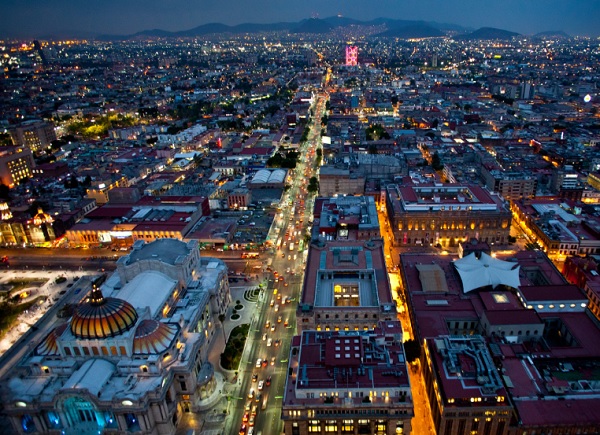As the largest city in North America and one of the largest in the world, Mexico City may be a bit daunting to first-time visitors. There’s enough to see and do in Mexico’s capital to fill various visits, after all.
So where to start? To keep from being overwhelmed by the options, it’s a good idea to break down the attractions and activities into categories.
Note: Most attractions and businesses in Mexico City were operating at reduced capacity and limited hours as of press time, in accordance with the destination’s pandemic safety guidelines. Some facilities may be completely closed, and those that are open likely require temperature checks and face masks. Be sure to confirm operating hours before making plans to visit any attraction.
Here are some of the top attractions for first-time visitors.

History Lessons
Square one for history lovers in Mexico City is the Zocalo, one of the world’s largest city squares, which sits in the heart of the historic downtown, a UNESCO World Heritage Site. Here, visitors can view what remains of the Templo Mayor, a former temple of the Mexica people, who thrived in the region back when the city was called Tenochtitlan. Spanish colonists destroyed most of the temple in 1521 to make room for the massive cathedral, which is another must-see in downtown Mexico City.
It’s easy to travel across centuries in a matter of blocks in downtown Mexico City. At one end of the bustling pedestrian street called Calle Madero is the Torre Latinoamericana (Latin American Tower), which was the tallest building in Latin America when it opened in 1956; today, the observation deck offers a rewarding view of the neighborhood’s architectural treasures, including the Palacio de Bellas Artes (Palace of Fine Arts), a performing arts center that opened in 1934 and draws admirers with its live performances as well as its stunning Neoclassical and Art Nouveau façade and Art Deco interior.
Visitors can also find historical treasures inside Parque Chapultepec, the massive city park that spans some 1,700 acres. Perched atop a hillside is the Castillo de Chapultepec (Chapultepec Castle), which served as the official residence of Emperor Maximilian I from 1864 to 1867. The city’s short-lived imperial era is long gone, but the castle now houses the Museo Nacional de Historia (National Museum of History), offering visitors an opportunity to learn more about the nation’s rich history as they explore the castle.
In the southern part of the city is Xochimilco, which is recognized as a UNESCO World Heritage Site as the “only reminder of traditional pre-Hispanic land use in the lagoons of the Mexico City basin,” according to the organization. The best way to appreciate the neighborhood’s lovely network of canals is to book a ride aboard a colorful trajinera boat.
Another must-see for anyone interested in the region’s pre-Hispanic history is Teotihuacan, the ruins of a city founded sometime around 200 B.C. It’s best to plan an entire day to visit this breathtaking collection of pyramids and other structures, which lies about 25 miles from the city.

Cultural Wonders
According to some estimates, Mexico City has more museums than any other city on the planet (except perhaps London), and there are cultural facilities to suit just about every taste and interest. The crown jewel, many would say, is the Museo Nacional de Antropologia (National Museum of Anthropology), a massive facility dedicated to the region’s pre-Hispanic history and indigenous cultures.
Art lovers, meanwhile, should consider a visit to Casa Azul, the blue house now also known as the Museo Frida Kahlo (Frida Kahlo Museum). The famed artist was born, lived and died in this very home, and a tour provides a fascinating glimpse into her creative genius. True fans of her work should also visit the Museo Casa Estudio Diego Rivera y Frida Kahlo (Diego Rivera and Frida Kahlo House Studio Museum), which is set in the twin, attached homes where the legendary couple lived and worked.
CLICK HERE FOR FULL ARTICLE ON TRAVEL PULSE


